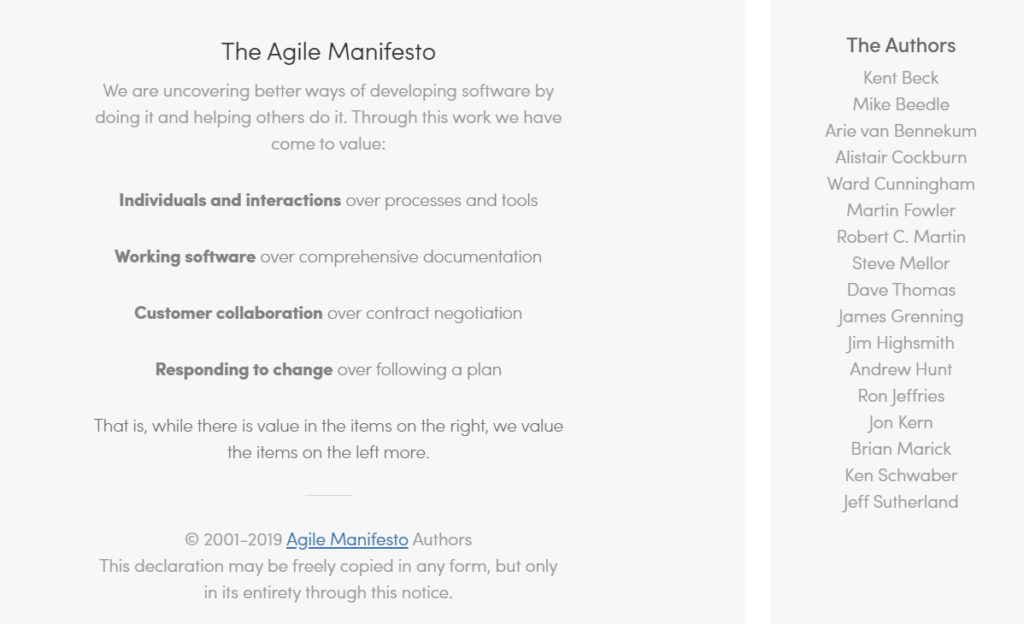Have you ever planned out and started a project, only to find out months down the line, a new technology is coming out that will make what you’re trying to do easier? Have you ever gotten a project through planning and implementation, only to find that users are interacting with it differently than you expected, and an alternative workflow would have been better?
Planning and developing projects using an Agile Development Framework can help save you from these situations. It can also save you the time, money, and resources you would have used trying to pivot a whole project or redo something you’ve already developed.
What is Agile?
Agile focuses on collaboration, continuously delivering incremental pieces of functional software, and cross-functional teams. It was founded by a group of seventeen people in 2001, who penned the Agile Manifesto based on twelve core principles.

At its core, Agile is a mindset. It focuses on breaking down a project into smaller, functional pieces. As each of those pieces is completed, they can be integrated into the larger product as a whole and tested. As the user tests and interacts with each new iteration, they can provide feedback in terms of functionality and design. If something sounded good in theory but doesn’t work well in practice, that piece can then be taken out and reworked before other pieces that depend on it are completed. This makes it easier to adapt to changing technologies and evolving user needs as the project moves forward, which is where the term “agile” came from.
Benefits of Agile
Developing a project using an Agile framework offers a number of benefits for both customers and developers.
By focusing on producing small, functional parts, it is easier for both parties to measure progress. It also shortens the time required for testing at the end of the project, as each iteration gets tested during the development process.
Since business and software personnel are working together throughout the process, any miscommunications about how something is supposed to look or function can be caught before the final delivery. This means the development team won’t have to go back and make significant changes after-the-fact, saving both time and money.

The iterative nature of Agile development allows for a project to change and adapt based on new technologies or shifts in a customer’s needs. This means clients will receive software that leaves them with a more competitive edge than they would have with the more traditional waterfall development.
Want to know more? Contact us to see how we can build a custom solution for you. The GEO Jobe Professional Services team uses Agile development to drive our projects, helping to ensure the software we build will meet your needs and vision.


